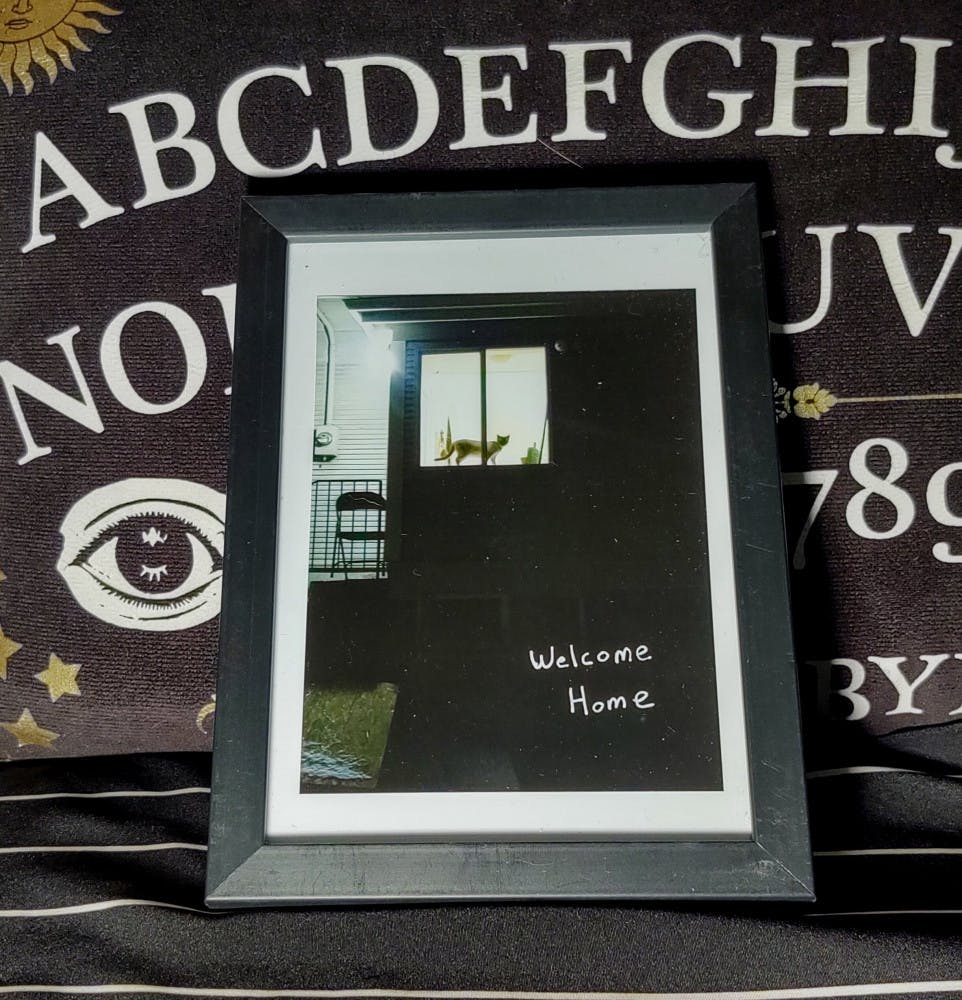
A print inside of a frame shows a cat looking through a window, with the words "Welcome Home" in the bottom right-hand corner. This print is one of many that Kat Varela has sold for mutual aid through their online platform Good Boy Mercantile. // Photo courtesy of Kat Varela
By Joslin Keim
Artists and students at Western Washington University are using their skills to raise and donate money to some of Bellingham’s mutual aid networks. Mutual aid networks focus on making an impact locally and emphasize the view of solidarity over charity, according to Mutual Aid Hub, a website displaying mutual aid networks in the U.S.
There are several mutual aid networks in Bellingham, including Whatcom Student Mutual Aid, which focuses on aiding marginalized college students in Whatcom County, and Bellingham Occupied Protest, which focuses on Camp 210 and serving Bellingham’s houseless community.
Artist and creator of Good Boy Mercantile Kat Varela said they originally became interested in selling art to help pay for people’s insulin. Varela said they’ve helped about 15 to 20 individuals with paying for insulin, looking for tags on Twitter and GoFundMe as well as donating to projects sent to them.
Varela also cited the COVID-19 pandemic and protests for George Floyd over the summer as something that got them to make art with the intention of donating the money earned from sales.
COVID-19 risks made Varela uncomfortable getting out on the ground, but making art from home was an option.
“I knew that I could do stuff from home and support people from, like, my room,” Varela said. “And it basically just became like a mutual aid thing.”
Good Boy Mercantile is both a business and online platform that showcases their jewelry, prints and clothing items for sale. Varela said they provide customers the option of donating toward people who are houseless or Black, Indigenous or people of color.
“Probably like 90% of the time, people will always choose the money [going] to mutual aid,” said Varela.
Gino Carella, an assistant professor of journalism and media in Emerson College’s School of Communication, has a background in visual storytelling, documentary film and working with organizations like Black Lives Matter chapters and labor unions.
Carella said community-organized spaces provide room for people to come together, work through differences and discuss values. He also said that these social connections don’t always come through on screens and social media platforms.
“We just need to sort of recognize the contradictions within these platforms but also leverage them for their ability to mobilize a large number of people fairly quickly and across a really broad geographic area,” said Carella.
Two more artists, Madeleine Pipitone and Tina Prekaski, mentioned how donating funds increases their motivation and justification for making art.
Pipitone and Prekaski are both third-year students at Western. Prekaski runs an Instagram page for painting commissions. Pipitone runs a Twitter page for crochet commissions, usually making hats and shirts.
Pipitone said receiving a tangible item that symbolizes community may be a motivating factor behind the purchases.
“I think it's a good symbiotic relationship,” Pipitone said. “It creates a lot of community with the people who are buying it, with people who are creating it and with the people who are getting the funds from it.”
Prekaski said they love seeing creators make things to benefit the community.
Carella said with his background in documentary film and visual storytelling, art can be a way of advancing stories and imagining the ways social and political life is organized.
“I always think about how is the art visualizing or narrating the taken for granted and challenging it or asking us to question it,” said Carella.
Joslin Keim is a third-year PR journalism major and a city life writer for The Front. Joslin’s writing focuses on the arts in and around Bellingham. Contact Joslin at joslinkeim.thefront@gmail.com or @joslinkeim on Twitter.





